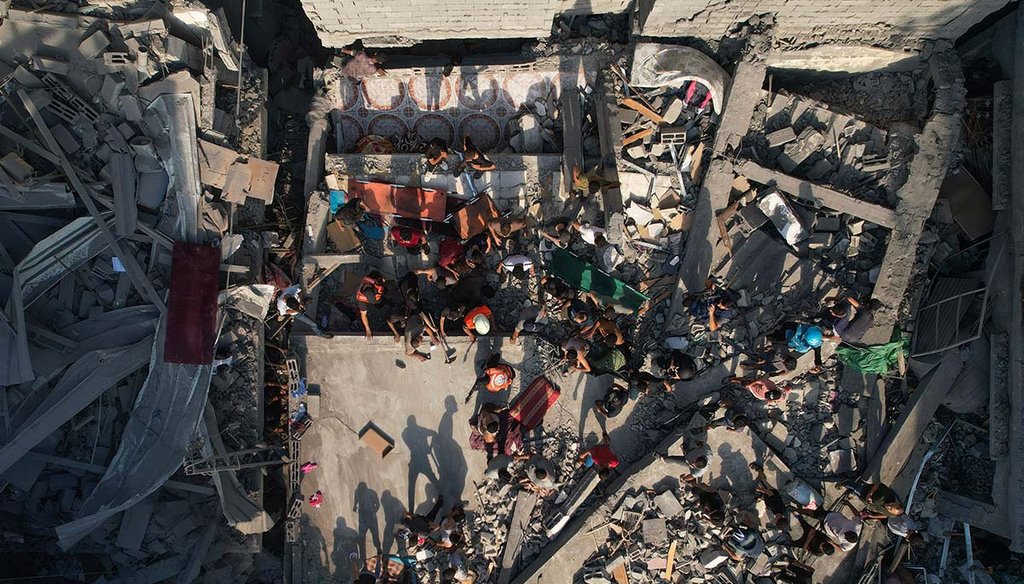Get PolitiFact in your inbox.

Palestinians inspect the rubble of buildings hit by an Israeli airstrike at Al Shati Refugee Camp on Oct. 12, 2023. (AP)
Social media is flooded with out-of-context videos and images users claim are coming from Israel or Gaza. Finding the original source is key.
The war between Hamas and Israel is playing out on social media through graphic images and videos shared on X, formerly known as Twitter, Instagram and TikTok.
But, like any conflict we’ve watched from our phone screens in the last decade, misinformation is rampant — including videos claiming to show Israeli children being held in cages and a fake BBC reporter fanning the flames of war. Fortunately, as with any breaking news event, like the ongoing war in Ukraine, some journalistic thinking and media literacy techniques can help you avoid sharing misinformation.
As director of the Poynter Institute’s digital media literacy initiative MediaWise, I recommend first asking three questions developed by the Stanford History Education Group in its study of how fact-checkers navigate the internet:
- Who’s behind the information?
- What’s the evidence?
- What do other sources say?
To answer the first question, leave the page you’re on, open a few tabs, and use keywords to find out more about a user or news outlet from a post. This is called lateral reading.
There are a lot of self-proclaimed experts in Middle Eastern geopolitics on social media right now. To sift through the noise, search for their name, the organization with which they’re affiliated, the university on their LinkedIn page and their username and scan results to gauge their expertise. Don’t click the first result you see — look for a link from a familiar source or fact-checking outlet — this technique is called click restraint.
Most of the falsehoods stemming from the conflict are in the form of old videos or photos, or visuals with misleading captions. Your best tool against these fakes: reverse image search.
Download the photo, or grab a screenshot of a notable section of the video you’re checking out, and drop it into Google Lens or TinEye to find the original source. Consider this false post claiming to show a high-ranking Israeli general detained by Hamas. With a screenshot, I tracked down a Russian news site that posted the same video — about an arrest in Azerbaijan from a week ago.
While I remain concerned about generative artificial intelligence supercharging the creation of disinformation, I’ve yet to see any significant AI images or videos. Still, it’s worth remaining on guard, and checking images for watermarks, warped features, too many fingers or other inconsistencies.
Of course, the best advice for avoiding misinformation is to simply avoid social media. If you, like me, are addicted to X, then the second-best advice is to follow a curated list of experts about what’s happening. David Clinch, a veteran journalist and media expert, created a useful list here, which includes journalists from Al-Jazeera English to Haaretz.
The war between Israel and Hamas has accelerated the spread of misinformation and broadened its reach due to graphic and emotional visuals, a deeply political conflict whose repercussions are felt around the world and a wealth of unreliable sources. It’s important to remember that you don’t have to share anything about the conflict on social media.
Our Sources
Please see links in story.



















